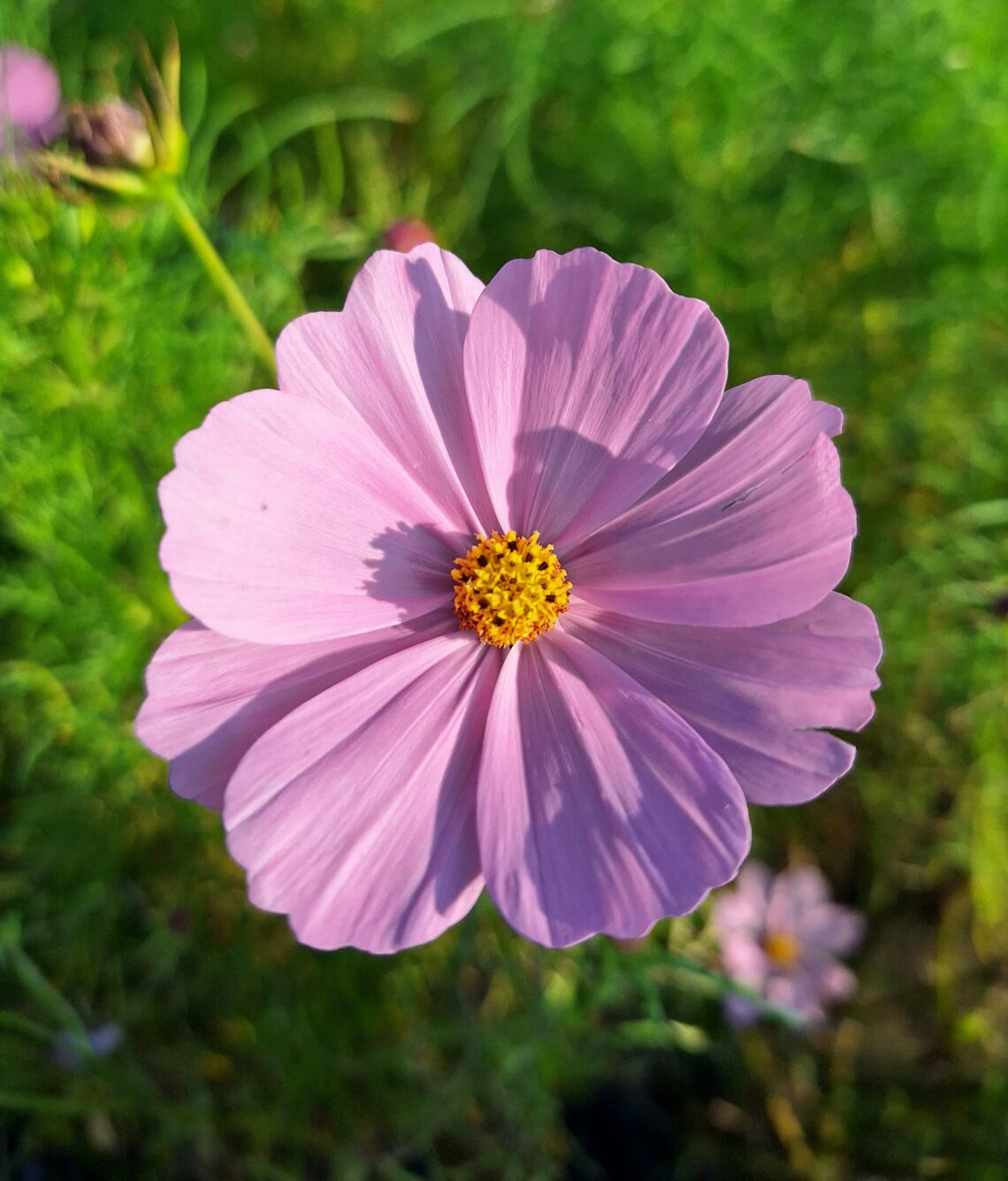The flower in the image is a Cosmos bipinnatus, commonly known as the garden cosmos or Mexican aster. It’s a popular ornamental plant known for its delicate and charming appearance, making it a favorite in gardens around the world. Here are some key details to make this flower more interesting to readers:
1. Visual Appeal:
- Color: The flower features a soft, pinkish-lavender hue, which gives it a serene and calming appearance. The petals are broad and radiate from a central yellow disk, adding a vibrant contrast that draws the eye.
- Petal Structure: The petals are arranged in a symmetrical, daisy-like fashion, with slightly ruffled edges, enhancing its visual texture.
2. Ecological Role:
- Pollinator Friendly: Cosmos bipinnatus is a favorite among bees, butterflies, and other pollinators. The bright yellow center, rich in pollen, attracts these insects, making it an essential plant for supporting biodiversity in gardens.
- Growth Habits: This plant is known for its tall, slender stems and feathery foliage, which add a delicate, airy feel to garden borders. It blooms profusely from summer until the first frost, providing continuous color.
3. Cultural Significance:
- Symbolism: The cosmos flower is often associated with harmony, peace, and love. Its name is derived from the Greek word “kosmos,” meaning “order” or “harmony,” reflecting the plant’s perfectly balanced and symmetrical flower head.
- Uses in Gardens: Due to its ease of growth and ability to thrive in various soil conditions, Cosmos bipinnatus is a staple in cottage gardens, wildflower meadows, and pollinator gardens. It also makes an excellent cut flower for arrangements.
4. Growing Tips:
- Sunlight: This flower thrives in full sunlight, needing at least 6-8 hours of direct light daily.
- Soil: Cosmos is not fussy about soil type and can grow in poor soils, though it prefers well-drained conditions.
- Maintenance: It’s a low-maintenance plant, often requiring little more than occasional watering during dry spells. Deadheading spent flowers can encourage further blooming.
5. Historical Trivia:
- Origin: Native to Mexico and the southern United States, the cosmos was introduced to Europe in the 16th century and quickly became popular for its beauty and resilience.
- Cultural Events: In Japan, the cosmos is celebrated during the “Cosmos Matsuri” (Cosmos Festival), where vast fields of these flowers bloom, attracting visitors from around the world.
In conclusion, the Cosmos bipinnatus is not just a pretty face in the garden; it’s a symbol of nature’s elegance and harmony, playing a vital role in supporting pollinators while offering low-maintenance beauty to gardeners. Its history, symbolism, and ecological importance make it a flower worth appreciating and sharing.
